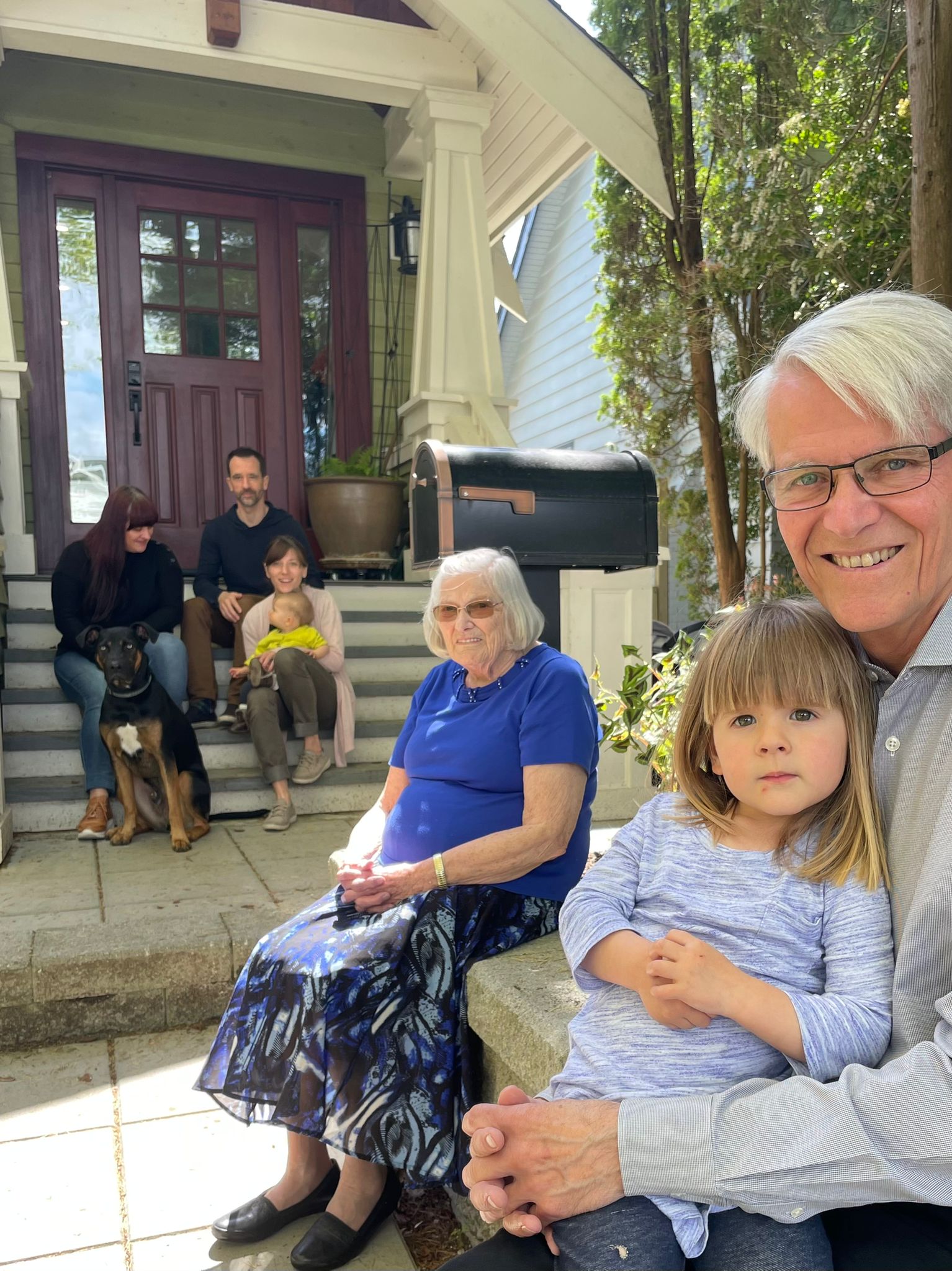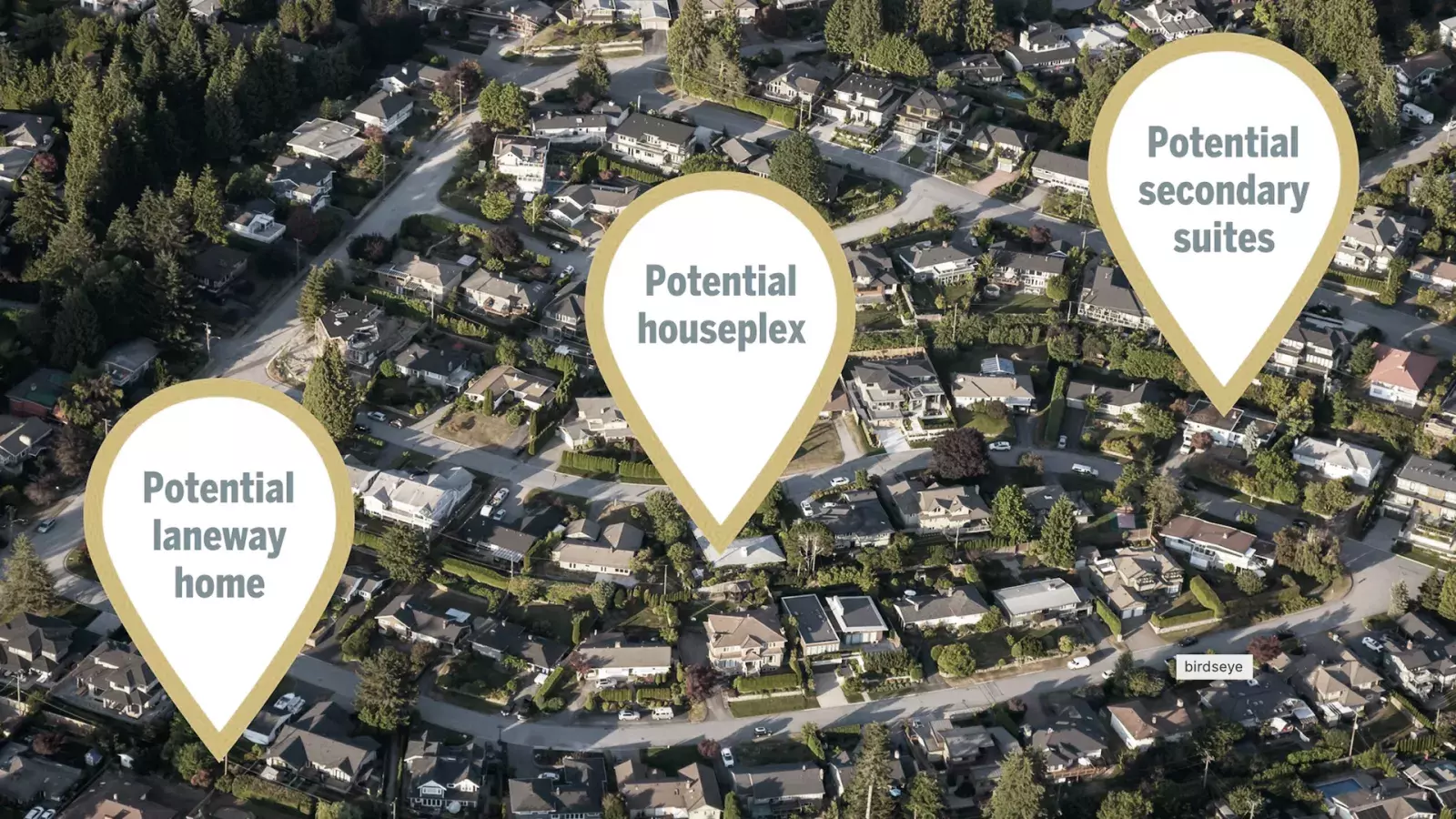Last month, we looked at the housing affordability issue through the eyes of a developer. Today, we continue the conversation around the complicated and sometimes controversial topic by speaking with Richard Bell, the Chair of the Board at Small Housing B.C. SHBC is a non-profit organization that collaborates with government, industry, and homeowners to enable the introduction of ground-oriented housing in single-family zones, with a mission to accelerate the adoption of gentle density housing in communities across British Columbia, making Richard a unique expert in solutions for affordability.
MLA: Richard, your role makes you a unique expert when it comes to creating solutions for housing affordability in B.C. Tell us about Small Housing and your involvement in the initiative.
Richard Bell: Small Housing B.C. is a not-for-profit founded over 10 years ago by Jake Fry of Smallworks. The mandate of SHBC is to promote the gentle densification of single-family lots to create affordable ground-oriented housing options. I have the pleasure of being the current Chair of the Board, which includes an incredibly talented group of individuals.
I became involved for a number or reasons, but as a lawyer who has a large residential real estate and estate planning practice, I have dealt with many families who are frustrated by the cost of real estate. Without the “bank of mom and dad”, it is almost impossible for the younger generation to own property in the community they have grown up in. Of course, not everyone has parents who can help out financially; for most parents, their wealth is in their home ownership so there are a limited few who can assist their kids with the upfront capital needed to stay in their communities.
I can also speak to the benefits of gentle densification as I built what we call the “Bell Family Compound”, which enables four generations of my family to live on a single-family lot using two units in the main house and a laneway home. The youngest generation on the compound is my three-year-old granddaughter and the oldest is my 95-year-old mother. The end result is an incredible network of support.
To date, the missing piece to successful gentle densification of single-family lots has been the inability, in most situations, to allow stratification. I am pleased to see that the importance of stratification is beginning to be acknowledged by all levels of government.

MLA: Tell us about the Gentle Density Network. Why is it important to improving affordability?
RB: The Gentle Density Network is an initiative launched by SHBC to bring together planners, architects, developers and related professionals to share ideas about challenges, solutions and existing initiatives locally, nationally and internationally. Every city small or large is faced with similar challenges and the sharing of best practices ensures better adoption and results.
MLA: What is the PAtH model, and why is it important to improving affordability?
RB: The PAtH model is the concept of a municipality granting a “density bonus” to allow an additional unit on the development of a single-family lot, provided there is a covenant requiring the additional unit be rented or sold at a discount off market. For example, if four units are allowed, the municipality could allow five units with the covenant. Or, if the municipality was charging a community amenity contribution, which hopefully they do not, they could waive the contribution if the covenant was registered against one of the strata lots. This would be an added affordability benefit beyond just adding more units on a single-family lot.
MLA: What are some of the recent initiatives laid out by the current municipal and provincial governments that support the Small Housing initiative?
RB: The B.C. provincial government recently announced the Housing Supply Act which enables the province to set housing targets for municipalities and to work with them to achieve those targets. The province also appointed Lisa Helps, a past mayor of Victoria, as advisor to the Premier on housing solutions. She is working closing with Ravi Kahlon, the provincial Minister of Housing. Together, their task is to create the BC Builds program, the objective of which is to create affordability for middle income earners. Provincial legislation set to be introduced in the fall of 2023 will allow up to four units to be built on regular size residential lots. This is similar to Ontario legislation, which allows for at least three units on single-family lots. New Zealand was a leader in this approach, passing legislation in 2021 to allow for three units three stories high on most single- family lots.
A number of municipalities are not waiting for the push from the provincial government and are moving forward on their own initiative. Victoria has already amended their bylaws, although they did not allow for stratification of units. Hopefully this will change sooner rather than later. Vancouver is going to public hearings to gain public input. The City of Kimberley has been a bit of leader in bylaws amendments to allow for densification. This recognizes that affordability is not just a big city problem.
MLA: What are some of the biggest challenges or hurdles in implementing the small housing strategy?
RB: The biggest challenge is acceptance of change. It is fair to say that most people know there is a problem but can’t agree on a solution. Foreign buyer taxes and restrictions, empty home taxes and even increased interest rates do not appear to have created affordability. Maybe the old law of supply and demand still governs real estate. What most governments have recognized is that we have plenty of demand but not enough supply. Gentle densification is just one solution to create more affordability.
The NIMBY (Not In My Back Yard) voice, although not receiving as much attention as in the past, continues to raise the idea of “destroying” neighbourhoods. The YIMBY (Yes In My Backyard) voice is being heard loud and clear by all levels of government with a recognition that these changes actually enhance neighbourhoods as opposed to ruining them. Even the introduction of laneways has seen an influx of young families bringing a new vitality to traditional neighbourhoods.
Another issue that is frequently raised is around parking. I think the response to this issue was best expressed by the current Mayor of Victoria, Marianne Alto, at a community event when she essentially stated, “we need to stop designing our communities around cars and instead design them around people.” There is also some compelling research that indicates a significant percentage of garages are not used for vehicles but simply for “stuff”.
MLA: What are some of the advantages to homeowners in supporting the small housing initiative?
RB: I can think of a number of different scenarios where there will be new opportunities for homeowners and want-to-be-homeowners. There is a tremendous opportunity for multigenerational living. Grandparents and children can all “own” a strata unit and share common space. If grandparents need support, their children are right there to help out. Vice versa, if their children need someone to take care of the grandkids, the grandparents are there to help out.
I think about a senior wanting to age in place. What a wonderful opportunity for them to access their well-earned equity in the dirt. They could redevelop their property and sell one or more units, giving them the capital to pay for in-home care instead of selling their property and moving into a care facility.
We are even seeing three or four couples or friends coming together. They can’t afford to buy a single-family home in their community (or may not desire to live with others) but they could afford to pay one-third or one-fourth of the value of the land and then to redevelop the property to into multiple separate units.
This doesn’t just create ownership opportunities. The redevelopment of single-family lots will create new rental units. This is a moment in time where we can re-envisage our traditional neighbourhoods to make them more accessible to middle income earners and move towards solving the affordability problem.
Thanks to Richard for educating us on the Small Homes BC initiatives and the framework they are creating to solve housing issues within our communities. Those interested in learning more can visit www.smallhousing.ca.

Chair of the Board, Small Housing B.C.



